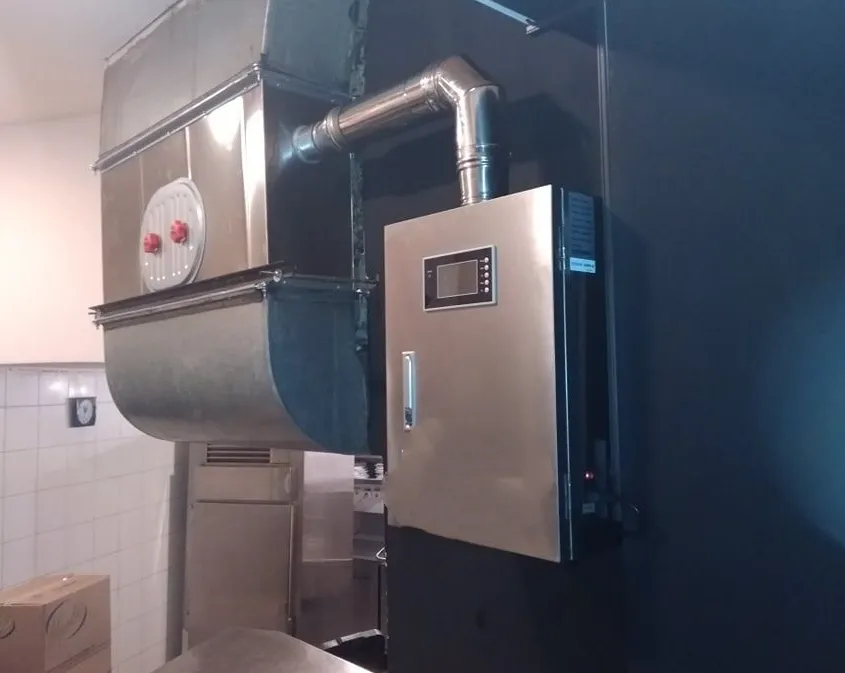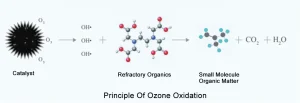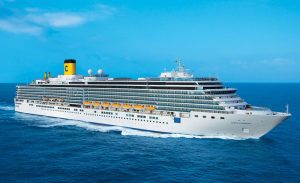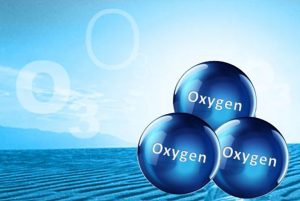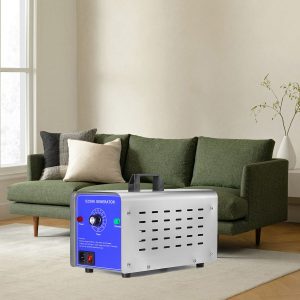Cold storage rooms stores all kinds of food including vegetables, fruits, meat, seafood, etc. Injecting ozone into the air in the cold storage room can keep the indoor environment free of bacteria. Therefore, the bacterial activity on the surface of stored food is very low. It is also found that vegetables, fruits, meat, seafood, and even eggs washed with ozone water or use ozone ice to extend the shelf life of these products for seafood. This is because ozone will destroy all the bacteria on the food surface, thereby reducing the microbial activity on the food surface, and reducing decay and extending the shelf life. The same principle applies to the use of ozone in the environment of a cold room. Food with ozone is fresher and longer stored in the cold storage rooms than food without ozone. The best point is that because the half-life of ozone is very short, it is not toxic to the environment and food. Ozone molecules are reduced to oxygen, making the environment harmless.
Using ozone water to create ozone-based ice is not a new concept. A 1936 French study of commercial fisheries found that fresh fish stored on ozonated ice had a 33 % longer shelf life than ice made from conventional water in the holds of fishing boats. Ozone water is used to clean seafood and fish fillets to reduce bacteria and prolong the shelf life of fresh fish.
Therefore, there is little bacterial activity on the surface of the stored food, which prolongs the shelf life of the food. The safety factor is that due to the short half-life of ozone, it is not toxic either in food or in the environment. Ozone has been found to be of great advantage in such cold rooms for better maintenance of stored food.
Since the price of fresh fish has always been higher than that of frozen fish products. The appearance of the fish meat can affect the market price of fresh fish. Ozone used in ice storage on fishing vessels has been used to maintain high quality fish, as well as to obtain high quality fresh fish products at high prices. When at sea, fish and seafood caught early in the voyage must be as fresh and of comparable quality as fish caught at the end of the voyage. Because these ships sometimes only go to sea for weeks at a time, ozone ice was considered an ideal solution to the storage problems encountered by this unique industry.
The use of ozone and ozonated ice can increase the shelf life of high-quality sardines from 5 days to 8 days, and the shelf life of high-quality sardines from 15 days to 19 days. Extended the shelf life of salmon from 4 days to 6 days, compared to using non-ozone oxidized ice, this data enables the same plant to fully use ozone, and the shelf life is extended by 33-50% in the case of high ozone use . The shelf life of ozone-treated fish fillets is 14 days, while the shelf life of traditional chilled fish fillets is 4-6 days. In this way, ozone can provide more than 100% shelf life. Squid stored on ice with ozone had a 12% increase in lifespan and a 2 log reduction in the number of bacterial plates with aerobic storage relative to squid stored on conventional thin ice without ozone.
Advantages:
· Ozone gas can be distributed throughout a cold storage facility at low levels
· Ozone-sterilized ice is use to pack fresh fish and seafood for longer freshness
· Ozone gas is used in meat coolers to inhibit microbiological growth and extent their shelf life
· Ozone is dissolved in water to wash fruits and vegetables and remove bacteria
· Low levels of ozone gas can be used in containers to extend shelf life upon delivery
· Dissolved ozone is used to wash meat and poultry to remove bacteria and extend refrigerated shelf life
· Food to be stored in ozonized atmospheres should be packed to allow circulation of the ozone and air
· Ozone control of mold and spores is best conducted in relative high humidity areas


